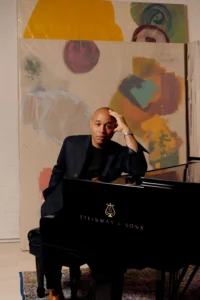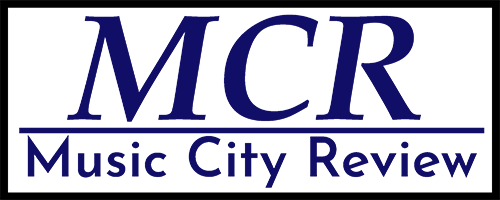At the Schermerhorn
SPECULATION, MANIFESTATION, AND A LITTLE CONTROVERSY: THE NSO Performs SCHUBERT, WILLIAMS, GOLIJOV, AND STRAUSS II
“Speculation, Manifestation, and a Little Controversy,” aptly describes the Nashville Symphony Orchestra’s program on March 14th and 15th. First, Schubert’s “Unfinished Symphony” remains a subject of musicological speculation as to why it was left unfinished. Second, the NSO, like several other orchestras in recent years, manifested Mary Lou Williams’s Zodiac Suite, breathing new life into the work. And third, Golijov’s Sidereus (2010) carries a controversy involving allegation of plagiarism. Specifically, I am reviewing the NSO’s Saturday (15th) performance, led by David Danzmeyr.

Despite the stormy Saturday night, the Schermerhorn’s Laura Turner Hall was fairly well attended, and the audience clearly connected with the evening’s music. Notably, there was a number of younger attendees who appeared genuinely engaged throughout the performance. For the audience, their expressions displayed a clear appreciation for the repertoire.
Osvaldo Golijov’s Sidereus, inspired by Galileo’s Sidereus Nuncius, opened the evening with a performance that highlighted the piece’s intricate texture and the NSO’s technical skill. The work, commissioned to honor Henry Fogel—former leader of the League of American Orchestras—sparked controversy due to its significant overlap with Michael Ward-Bergeman’s work for accordian Barbeich (2009).[1] Golijov clarified that this overlap resulted from a pre-agreed repurposing of unused material from their collaborative film score for Francis Ford Coppola’s Tetro (2009). While not plagiarism, this situation ignited a debate regarding originality in contemporary composition.[2]
Musically, Sidereus features a layered texture: the foundational harmonic support—from low brass, low winds, double basses, and timpani—is overlaid with tremolo and bariolage figures in the violins and cellos, creating airy timbres. The NSO’s string section demonstrated exceptional proficiency in the demanding bariolage technique. A third textural element, rhythmically elongated pitches in the upper voices, completed the soundscape.
Golijov’s inspiration from Galileo’s astronomical observations is reflected in the composition’s structure, with harmonic and melodic elements mirroring the methodical exploration of celestial bodies. The deliberate simplicity of Sidereus serves to make the piece accessible, inviting listeners to engage with its subtle nuances and draw parallels between Galileo’s focused lunar observations and the composition’s restrained complexity.[3]
Mary Lou Williams’s Zodiac Suite (1945), a twelve-part astrological character piece, stands as a testament to her pioneering role in jazz and her highly innovative compositional approach. A versatile musician—the first woman and African American woman to have a career in jazz by the 1920s—who traversed blues, boogie-woogie, swing, bebop, and third stream, Williams significantly influenced jazz figures like Charlie Parker and Thelonious Monk.[4]
Zodiac Suite, considered by Williams a major artistic achievement, initially faced challenges with compromised recordings and lost master tapes. Nevertheless, the suite’s complex structure, reflecting Williams’s deep engagement with early 20th-century classical composers such as Hindemith, Stravinsky, and Schoenberg, remained apparent. While not directly emulating their styles, she adopted their disciplined approach to compositional structure. [5]

Pianist Aaron Diehl has revitalized Mary Lou Williams’s Zodiac Suite, a testament to her innovative fusion of classical music with jazz harmonies and rhythms. Diehl’s meticulous study and recent recordings, including this performance with our NSO, highlight Williams’s unique approach, which extends beyond the efforts of her predecessors like William Grant Still and George Gershwin. While they explored similar cross-genre fusions, Williams distinctively integrated the sounds of the African diaspora into classical frameworks in a more personal and unique manner. Her Zodiac Suite, dedicated to astrological signs and musician friends under those signs. The suite’s diverse moods and intricate architecture, as showcased by the NSO’s performance, with Diehl [along with bassist David Wong and percussionist Aaron Kimmel], underscore Williams’s enduring legacy as a composer who forged a truly individual musical language.
Schubert’s “Unfinished Symphony” [Symphony No. 8] stands as a captivating enigma in classical music. Unlike Mozart’s Requiem, Schubert’s death wasn’t the cause of its incompleteness. Composed contemporaneously with Beethoven’s late works, Schubert’s symphony diverges sharply, prioritizing lyrical melodies and harmonic color over Beethoven’s dramatic, motivic development. Schubert’s approach, focusing on emotional precision and a more intimate, subjective expression, marks a kind of departure from the prevailing symphonic style, making the first movement a testament to his distinct creative power.
The Classical Series of the Nashville Symphony returns at the end of the month with a program entitled John Williams and Rachmaninoff’s Second Symphony. Tickets are available at www.nashvillesymphony.org
Works cited
[1] Alex Ross, “The Golijov Issue: Borrowed Music of Stolen?,” The New Yorker, February 21, 2012, http://www.newyorker.com/culture/culture-desk/the-golijov-issue-borrowed-music-or-stolen. Accessed: March 16, 2025.
[2] “Composer Golijov explains use of borrowed music in ‘Sidereus’,” Symphony: from the League of American Orchestras, March 9, 2012, https://symphony.org/composer-golijov-explains-use-of- borrowed-music-in-sidereus/. Accessed: March 16, 2025.
[3] Tanit Sakakini, “Osvaldo Golijov on Sidereus, Henry Fogel Commissioning Consortium,” Boosey and Hawks, October 2010, https://www.boosey.com/cr/news/osvaldo-Golijov-on-sidereus-Henry-Fogel-Commissioning-Consortium/. Accessed: March 17, 2025.
[4] Editors, “Mary Lou Williams: American musician, composer and educator,” Britannica, 2025, https://www.britannica.com/biography/Mary-Lou-Williams. Accessed: March 17, 2025.
[5] Rusty Aceves, “On the Record: Mary Lou Williams’ ‘Zodiac Suite’,” The SFJazz Magazine, January 21, 2025, https://www.sfjazz.org/onthecorner/articles/on-the-record-mary-lou-williams-zodiac-suite/. Accessed: March 17, 2025.



